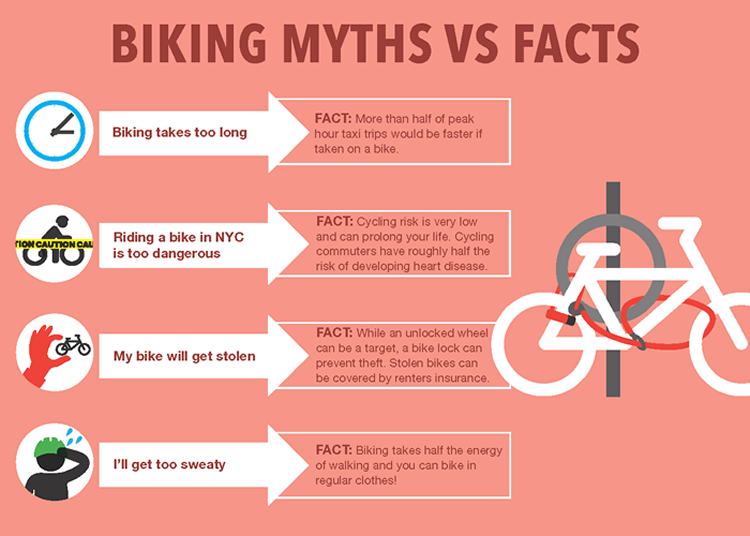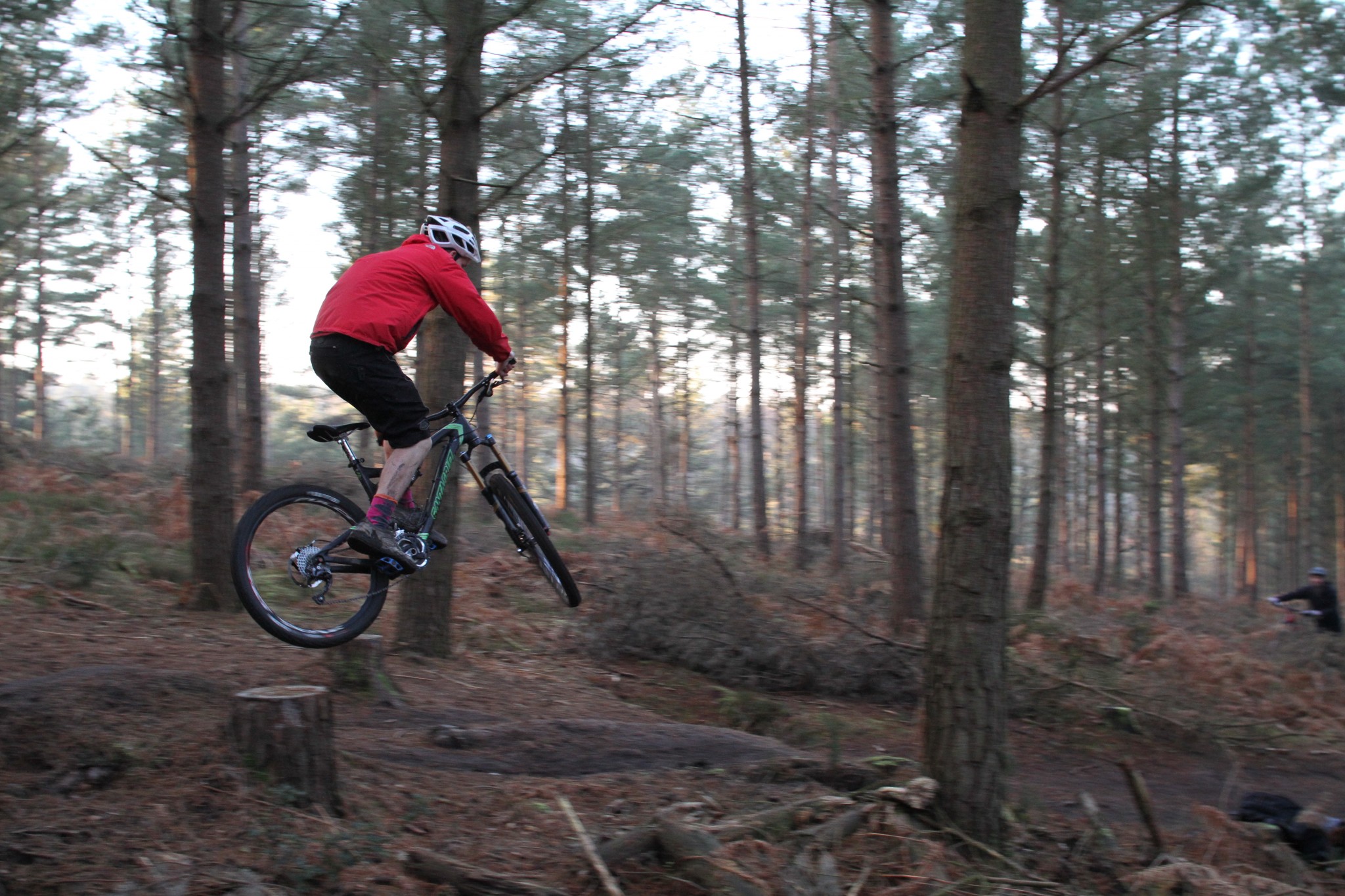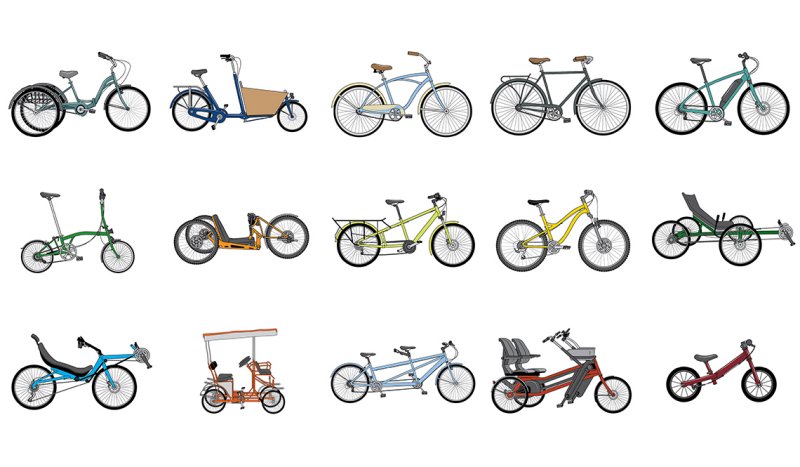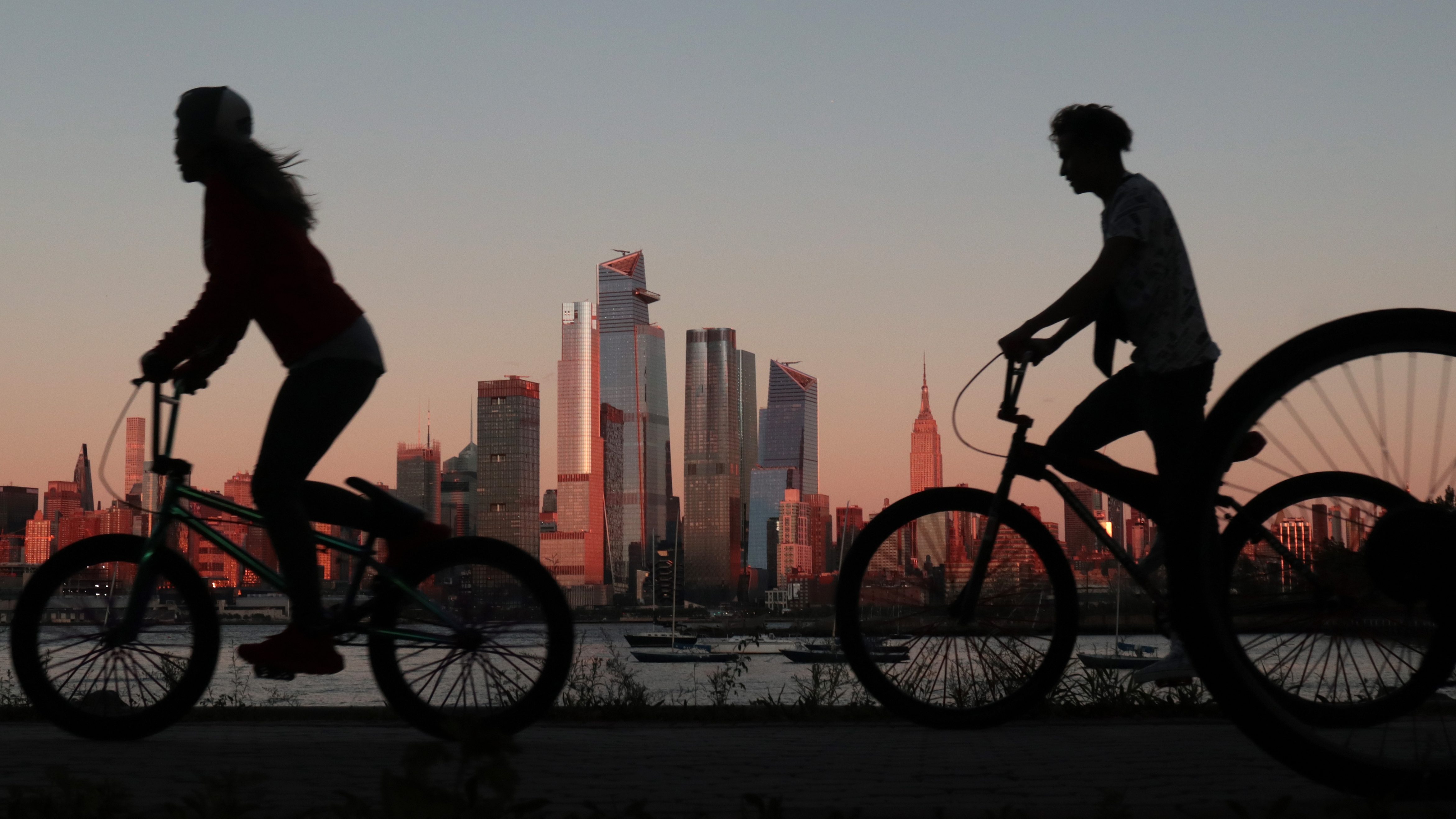Created May 22nd, 2021
So, you love a good thrill? Well, bicycles are a thrill all by themselves, it's positively exhilarating to ride a bicycle even in a very casual environment, and nothing beats riding a bicycle on a forest path (For many people), indeed, if you find a few mountain bike trails in your city / area, you'll probably get the chance to do some actual jumping as well.
I'd highly recommend becoming familiar with jumping on a bicycle before you go setting up your own ramp to jump on, if you click on the (Image Source) above you'll find a great article to learn about just that too, and yes I've linked a lot of other websites to this blog to point my readers to great content already written by other authors. For me, this blog is not about the money at all, though donations are of course more than welcome, zero doubt, and having a resource to reference to great articles / sites is a phenomenal way to obtain quick access to the best content on the web without having to do searches for specific content. This blog is dedicated to encouraging young and older cyclist to become better!
One of my future blog post will be entirely dedicated to links on various topics, though I prefer to do that as a later blog post to ensure that it remains at the top of my blog, and of course you are still free to re-read my older blog posts to find older links I've posted in the past. Nevertheless, back to the "Thrills", because let me assure you, there are a lot of thrills with bicycles, and one of them is the sheer savings you amass from not using those gas sucking beast called vehicles / motorcycles, but don't let the whole "eFad" (All electric) things swing you over to that scam...
Yes, it's a scam because electric motors are highly inefficient, along with batteries, and that's why gasoline has been far more popular for many years, it's far more efficient! Nothing however is remotely efficient as the most efficient machine on earth, the Human Body, for it can take nominal amounts of energy and do things that would even leave your grandpa in awe, especially on a bicycle!
Sorry for the dry humor, but on a more serious note, electric bicycles can be very exhilarating too, I mean they are fast, well sorta, and they can take you further faster than the old mechanical bicycles can, but you don't get the fitness / exercise and weight loss that comes with having to do it the old fashion way either! For those commuting daily, an electric bicycle makes sense if you are using it to go to work, just make sure you have a means to stay dry if it rains on you, and make sure you don't go too fast, or you are definitely risking the thrills that sends chills through cyclist, like falling down!
Of course, not everyone is ready for "The Thrills", I do not recommend trying to jump a mountain bike at a young age (Under 8 years old), and definitely don't do it on concrete or brick paved surfaces, no way! Obviously though, even with protective gear on, falling into mud is far better than falling into concrete or bricks, or even trees for that matter, so ensure that you aren't on a dangerous path to jump on, meaning don't jump on rocks, gravel, sand, and slick surfaces, bad idea!
Also, please consider that, while you are jumping you have zero traction, and once your front wheel goes airborne you must balance your bike and your self to prevent tilting towards an angle that can cause accidents or injure you. Obviously learning to ride a wheelie or do an endo can help a lot, but more on that later!
Some of the other not so common thrills is trying out a new or different style of bicycle, like a tricycle or a quadricycle, and indeed as you try riding different styles of bikes you will eventually develop your own taste and better gauge what makes riding optimally more fun for you. For me, it's just casually riding on a comfort bike along trails, forested areas, back roads (Not gravel), or areas more or less, less explored or used.
I have other thrills too, like popping Wheelies or Endos for fun (Not to impress folks usually, but occasionally I do them for the kids. :), and it's good to find some thrills in life that aren't too deadly or dangerous, because driving 120+ mph on a motorcycle is definitely NOT the kind of thrill seeking you should ever entertain unless you are on a closed / safe track setup for such and are highly skilled. There is fun, then there is dangerous, and then there is just stupid and deadly, reckless even.
If you don't want to end up wrecked / destroyed, then observe proper safety at all times, and that most definitely includes wearing protective gear & eye wear, because yes you can lose an eye quite easily on the road (Flying rocks / UFOs) or even on a sidewalk or trails even. (Branches) I'm not much of a fan of helmets, but I wear one offroad, I mean it's a bicycle, not a motorcycle, and I don't ride beyond 15 mph usually, unless I'm going down a hill, and even then I use my brakes to ensure I don't go too fast. (Because stopping is far more important than going!)
You'll understand full well why using your brakes more when going downhill is critical when you start going faster than safe handling on a bicycle is recommended, which is where accidents happen, and all it takes is one wrong move and down into the ditch you go flying, or into the pavement, which is far worse! The thrills of a bicycle doesn't come with just thrills & chills, it can also come with losses too, because though you might be able to get back up unscathed even, your bicycle however might not have survived the critical error or mistake, and that can get real expensive, real fast!
I can just hear the curses of carbon fiber bicyclist that destroyed their first carbon fiber rim or frame, so more expensive bicycles are also more costly from a different angle as well, and believe me, I've seen some steel bicycle frame riders who were just as awesome as those titanium frame riders. (It's the rider, not the bicycle, silly!) Unfortunately even the cost of steel and wood is going to the moon as of late, who knows how long before even cheap rubber tires for bicycles are $80+, and that's how they ultimately beat us serfs, minimalist, or survivalist even, price gouging.
I'm sure a lot of cyclist could not wait to get home to ride there new $1,200-$3,800 bicycle at some point, but even at these prices, based upon the weight of the bike, many bicycles can be more expensive than a sports car or motorcycle! That's the real problem with the bicycle market today, there's no more value in it like in the days of old, and though there is a used bicycle market to help you side-skirt the outrageous cost of new bicycles today, even good used bikes can be too expensive.
I did not make this blog post however to be a rant about prices or a costs vs value argument at all, so I'll just leave it at that, and there are indeed other great thrills to entertain, like joining a bicycle club! Yes, you can start your own or join one that's active, just like a "Chess Club", but for bicycles, and of course at the end of every ride you should probably have an outing planned to discuss the trip and plan future trips as well!
Planning, that's another thrill of bicycling, because just jumping on your bike for a quick thrill is a lot more rewarding when you have actually planned a whole day or evening of riding instead, and the reward is you get to enjoy more riding time, which is where the real thrills are. I ride a lot on the road, thrills come my way all the time, but be on the look out for the bad thrills, like thieves who are tailing you, and yes many young thieves will follow you to find out where you live, so be aware!
Respect the life of a cyclist, it's a semi-dangerous one, especially if you are on the road a lot, or get into mountain biking, but you can't avoid falling off a bicycle, everyone will go through that experience, even multiple times throughout their life if they ride bicycles. I recently had the opportunity online to entertain a video of someone using a leaf blower to propel themselves on a bicycle, it was absolutely funny and bewildering at the same time, because it was effective, and it gave me pause and forced me to ask a critical question, "Why hasn't someone came up with an effective air motor for bicycles?"
I also spied a video on Tik Tok where someone had mounted 4 leaf blowers to a pallet to propel this very heavy pallet with a man on it down the road, and that of course gave me a good chuckle, because it was absolutely obnoxious but it worked well amazingly! (Till he hits a pothole or bump of course!) There are many things to consider as a cyclist, bumps and potholes of course can be the thrills that turn into chills, or they can lead to disaster, like a bent rim or busted fork, which is very common, and then there are curbs, which are a real bicycle wrecker... (Depending upon height, weight or rider, speed, bicycle, rim size, etc.)
Life is an "Experience", cycling too is definitely an experience, however the longevity of that experience is lengthened extensively longer IF you listen to caution, wisdom, &/or good advice, because doing whatever feels like fun can definitely lead to disastrous results! Like heading into uncharted territory without caution, a backup plan, or a means to get out of said territory rapidly, likewise, while cycling you need to consider your path and where it leads too.
(Parents of course are all the more responsible to ensure their children understand the dangers!)
Everything you focus on is critical while riding, not focusing on your path is also very dangerous, and not thinking ahead or learning to avoid disaster is of course very dangerous as well, but the later only comes from experience. Experience of course is what is necessary to acquire skills, though we start off unskilled, with practice our skills rise, and if we practice long & hard enough, our skills might begin to reach expert levels.
If you ever want to reach the level the pros are on however, you will need an instructor and I don't mean a mediocre one, and this is why coaching is highly recommended to anyone serious about getting into cycling for sport / competition / money / or prizes, and yes people do make bets / wagers. One of the more nefarious bets is amongst young children who say something along the lines of, "I bet you can't jump that", and this is where the real thrills begin, success or failure, or chills for the inexperienced!
Bets, dares, or challenges are what push people to strive for higher, achieve greater things, and until you are challenged, you aren't going to go beyond "Mediocre", "Average", or even "Expert", because any expert can beat an average rider, but when they face real tough opponents, like pros, well that's when the real challenges begin! Raise the bar on yourself, without being reckless, you have to practice a lot, and once your coach feels you are ready for the pros, they'll let you know.
Dear old Dads, like myself, cannot take you to the level of Pro, you have to consult with someone who has been there and still has the skills, and that's because someone showing you what it's really about is half the battle, you learning to do it for yourself is the other half! If you have enjoyed this blog post, don't forget to check back frequently (Each week or month) for more!
Thanks for reading, I hope this blog helps you, and please share a link with others, thanks!.
If you would like to help me continue to help others, you can use Pay Pal or CashApp to send me a donation via my email at: galegtech@gmail.com
Thank You readers for your support!
Copyright © Gale Innes 2023
All Rights Reserved Worldwide








